Your Cart is Empty
Customer Testimonials
-
"Great customer service. The folks at Novedge were super helpful in navigating a somewhat complicated order including software upgrades and serial numbers in various stages of inactivity. They were friendly and helpful throughout the process.."
Ruben Ruckmark
"Quick & very helpful. We have been using Novedge for years and are very happy with their quick service when we need to make a purchase and excellent support resolving any issues."
Will Woodson
"Scott is the best. He reminds me about subscriptions dates, guides me in the correct direction for updates. He always responds promptly to me. He is literally the reason I continue to work with Novedge and will do so in the future."
Edward Mchugh
"Calvin Lok is “the man”. After my purchase of Sketchup 2021, he called me and provided step-by-step instructions to ease me through difficulties I was having with the setup of my new software."
Mike Borzage
The Edge: Ryan Siemers, Telling the Story Behind the Architecture
September 13, 2013 16 min read
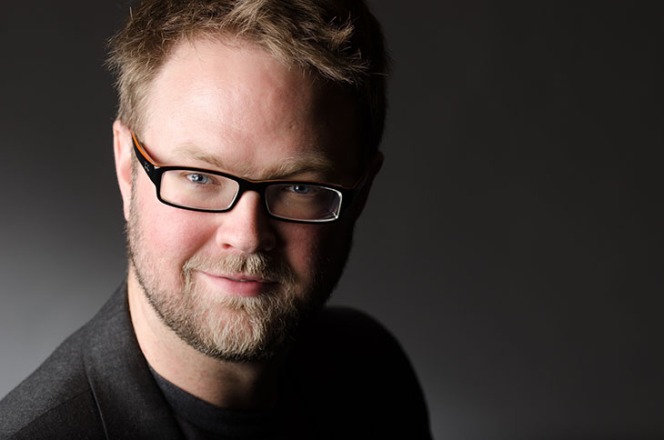
Novedge: Tell us a bit about who you are and what you do
Ryan Siemers:
I am a 33 year old jack of all trades who has always gravitated to technology and innovation as a means of enabling my creativity. Ever since I was a young child, I’ve loved to tinker, invent, and daydream. My parents still tell me about times when I used to take apart all their appliances and gadgets just to see how they worked (sorry Mom and Dad).
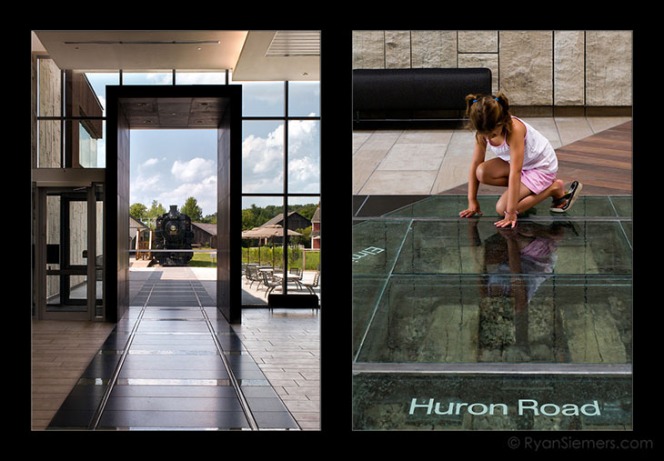
Today I help architects, designers, and product manufacturers communicate their value and abilities with their clients and the public at large. I do this by creating stunning visuals and crafting concise narratives from project team interviews and client testimonials, for both completed projects and those yet to be built. I am also the kind of entrepreneur who has many irons in the fire so I also continue to be a design consultant which allows me to balance my time with clients who need just a little help from time to time with everything from 3D modeling, drafting, rendering, some presentation work, website design, and even a bit of graphic design. I find that this gives me a well rounded set of skills to also bring down expenses when creating graphics for my own films.
Novedge: How does your background in architecture inform your work as a photographer and a filmmaker?
Ryan Siemers:
That is a great question. An architectural photo is trying to achieve two things at the same time: convey the character and/or purpose of a place and present it in a quality or state of being that exists for limited moments in time (i.e. sunset). What that means, is that you often create an impressionistic image that lives in the mind of the designer, but is something that many others might overlook if they just happened by it.
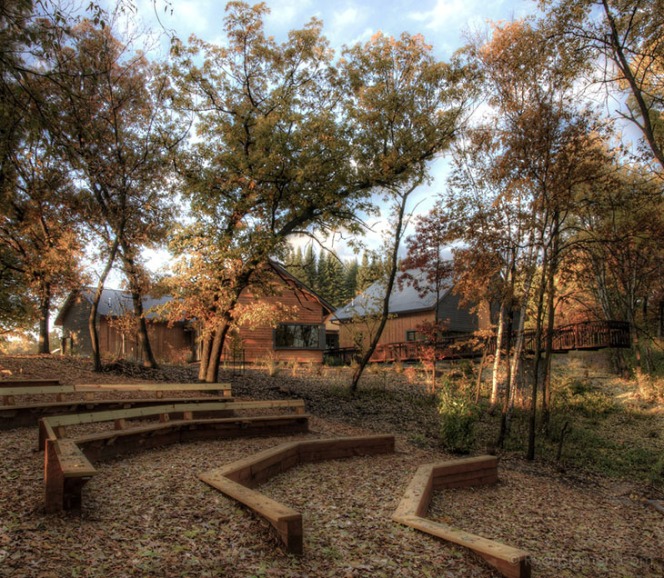
My very first design studio class was with Joshua Weinstein, from SITE II Architecture. It taught me about creating an engaging narrative for a project. For the better part of each class we would be exposed to previous case studies of Joshua's work which was methodically delivered and whimsically told. I understood only upon reflection that he was teaching us how to tell a very clear story for any project by defining a challenge, describing a process (a way of attaching a problem), and delivering a solution all the while providing a case for why it was done. Beyond a carefully disguised example of story telling, each assignment was a baby step towards independent thinking about how we perceive space and identifying why a space makes us act or react in particular ways.

When I’m telling the story of a project through a series of still images, I try to capture the character of a building in a way that represents it with a bit of theatrical drama, without going over the top. I convey a sense of time, place, and feeling that encapsulate the experiences that a user might have upon their first time approaching the building or within its space.
When I’m telling the story through a short film, I’m able to craft a narrative that is more nuanced and provides more insight about exactly what the design team intended and how a project affects the people and places they interact with.
My time studying and working in architecture has provided me with a unique perspective when I’m on location for a shoot, allowing me to understand a building and its site through the eye of the design team. For example, I can perceive what drove the decisions to break down the scale of a building through the use of materials or details in a particular way. I can capture a building in context by seeing how the form responds to neighboring buildings or other site forces. I can quickly understand how site constraints may have created the need for difficult choices and know how to mask those “challenges” when I compose a shot. My experience designing spaces allows me to see what type of experience is desired for the building’s user, which leads me to decide about what camera position and focal length I need to use to convey that same impression through a two dimensional image.
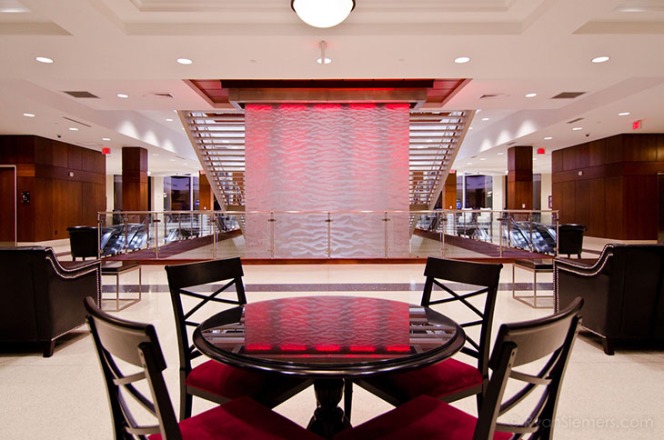
“Architecture” is a very nuanced and difficult concept to pin down with a simple definition. Architecture is a reflection of our cultural values, current economic conditions, and current state of science and technology. Architecture is also about the people whom our built environment serves and it conveys the way we want to live and work. The really tricky thing about architecture is that it’s about solving one set of problems while also understanding the role of being just an individual part within the whole of a larger entity.
A perfect example of one project where thismattered deeply was for The Northern Star Council’s Base Camp. More than just a renovated building for the Boy Scouts of America, the camp is a springboard to the outdoors, building community and preserving history. It also offers a unique year-round environment where visitors can engage in team building, rock climbing, rope courses and archery.
Novedge: Do you usually shoot both still and moving images for the same client?
Ryan Siemers:
Yes. In a time when we are reaching clients in multiple mediums, it’s important to have the right resources available to reach them. The challenge, of course, is leveraging a budget or offering a product that provides both opportunities.
While I do have clients who specifically want one or the other medium, a client may also be aware that they need to be thinking long term. Meaning they may not have a specific goal in mind for using video footage, but they know they one day will want clips available. So we look for key opportunities that take advantage of the time on site without duplicating effort where possible.//player.vimeo.com/video/54876422?title=0&byline=0&portrait=0&color=ffffff
Ryan Siemers: Architectural Filmmaker/Photographer from Ryan Siemers on Vimeo.
Novedge: What are the differences and similarities in your approach to still photography and filmmaking?
Ryan Siemers:
Let's break it down.
Planning:
In both cases, I meet with the client and clearly define the scope for the project. I want to be clear on the story or goals they have for the project. I ask a few questions:
– Is this a key project that you plan on highlighting in numerous publications?
– Is it a new building typology for you?
- Is there anything that makes the project distinct from your other projects or unique in its construction?
– Are there any issues regarding the site or access that I should know about?
– Are you trying to capture the building in a specific type of weather?
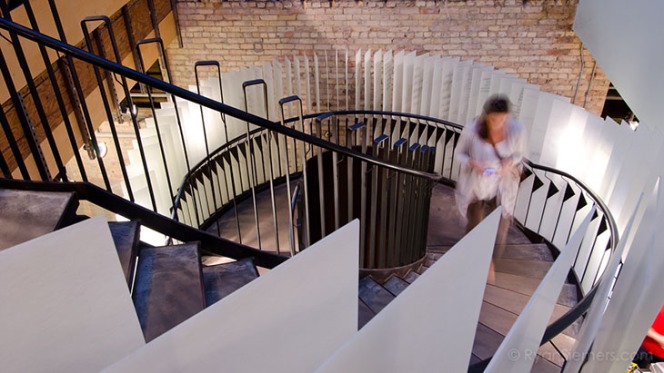
In case of still photography, it’s best to have a priority list of spaces or shots they want to get. In some cases the architect will have renderings of the project that they want to replicate in the completed built space. Yet, even if they don’t have a rendering, I keep in mind that they have spent considerable time conceiving of the space and will have an idea for composing a shot in their mind. I think this is why some architects get particularly frustrated with licensing issues (a topic worth discussing!). I think it’s important to remember that this is a collaboration of arts, not a competition for the best concept. On the flip side, I also have clients who have never seen a model of the space and just know that they need it to look great. They come to me because they know that I can deliver a finished image that communicates exactly what they need.
//player.vimeo.com/video/32927763?title=0&byline=0&portrait=0&color=ffffff
Past Present and Future: The Tulsa City-County Library from Ryan Siemers on Vimeo.
Filmmaking on the other hand is still a new breed of animal for many of my clients. While a client will often have a goal in mind by the time they approach me, (like raising funds for a project, promoting it in an online publication, or submitting it for an award) they have very little idea about how they can achieve it. In those cases I help them first narrow down the narrative by identifying the five Ws. The who, what, where, when, and why of the project. We will develop an outline for the message they want to communicate, and we use this outline to create a set of questions for the interviews with the design staff, clients, and users of a building. Then the task becomes identifying the right imagery to fit the message. That’s when we work on a rough storyboard to help us maximize our production schedule.
Another approach to filmmaking that I’ve used is a discovery based process. Essentially you don’t know what the story is about the project yet, but through interviewing the design team and clients you start to hear a multitude of stories that can be explored. This is a particularly insightful (but can also be time intensive) approach when you have an independent project that you are trying to define a scope for. I used this for a story about Public Radio International for Architecture Minnesota Magazine.

Production:
With still photography, you are often conveying a moment in time or focusing the viewer on a particular detail. The viewers, if they are so inclined, will be able to spend an indefinite period of time scrutinizing every detail of the shot. However you also have to compose the shot as though they will only be looking at it for 3 seconds and then flip the page. So you have to know exactly what is important about the shot, why you want them to see it, and know how to frame the shot so that their eye isn’t distracted by a radical element in the image.
When speaking about technical approach for a still shoot, I prefer to work with available light and supplement it with small strobes and soft boxes. I’ll shoot tethered to my iPad or my laptop, depending on the amount of time and assistants available on location. I’ll work with a stylist for staging if budget permits.

In motion (filmmaking), you have control over how long the shot is on the screen, but you will likely never have a single shot up for more than 5 seconds in order to hold the audience attention for the whole film. You are also mindful of drawing their attention through the movement of the camera. There is usually a bit of extra equipment involved with motion shoots. There are also multiple takes for speed, smooth movement, and usually alternative movement if time allows.
In the cases where I’m pulling double duty (getting still and motion shots) but there isn’t a clear direction, I use the same framing and styling techniques to draw the eye to key points or to allow a broader view through slower motion.
//player.vimeo.com/video/25464796?title=0&byline=0&portrait=0&color=ffffff
Maple Grove Library, Abridged Ed. from Ryan Siemers on Vimeo.
Balancing light is trickier with motion, if you aren’t doing a time lapse segment. Working with available light is more of a challenge here, because you have to balance the temperature (or color) of the light when you have multiple sources of light such as florescent, incandescent, LED, daylight, etc. Kitchens and atriums tend to be the worst spaces because they often do not coordinate bulb types, and you’re often competing with the sun for color temperature. The most commonly viewed example of this can be seen in real estate photos of a home’s exterior at night. The house’s exterior lights will have lit the exterior “beautifully”, but all the windows are a hideously sickly yellow. Some think it gives the impression of a warm interior, but it makes me think someone was too lazy to use the temperature adjustment brush in Lightroom. This isn’t as easy a fix in video.

Video is also a tricky medium for lighting. You’re back to the dark ages of film photography when you often had to choose to expose for the highlights or the shadows. It’s very difficult to overpower or balance the strength of the sun with supplemental constant lights intended for video. If the budget is big enough, you can mask the windows with a color and neutral density window film.
One way to overcome this, if you can, is to get some terrific shots from the interior looking out or vice versa, shooting at twilight. You’ll have to work fast and plan your shots well though. It’s a very short window of time to work with and there’s no guarantee the weather will cooperate with you.

In both still and motion work, I prefer to work a location on my own or with a stylist and assistant, however having the architect/designer on location will have the added benefit of providing feedback for staging a shot just a bit differently that I envisioned. The challenge tends to be balancing expectations about what you see in the field vs what is often produced in post production and knowing how much is cleaned up in post. Video can be a real challenge here, since to have the best image to work with in post, you need to start with the flattest, dullest, lowest contrast image in the field. This can be confusing when working with someone unfamiliar with the process.
In the still photography world, you can get by with a camera (and a batch of lenses), tripod, and well placed light. In motion, there are many more hats to wear. There is director, director of photography, gaffer and grip (they manage lights and shading devices), audio engineer, etc. Many firms at this point aren’t ready for bigger budgets with a 5+ man crew. At least not for more than a day. I tend to work light and relatively fast. So that means, I often need to work with a small 1-2 man crew that can take care of all the equipment and staging. The trade off is that there may need to be higher priority placed on fewer shots or more time needed on location.
The other component I haven’t touched on for the production of video is that image is only 1/2 the story. If you don’t have good audio, you don’t have a story. There is spoken word, foley, and music to consider when producing a piece and having someone on board with that experience can make all the difference in the world. I have interview audio under my belt now, but there were some painful lessons from early productions. Good music is something some clients have a budget for and others just aren’t ready to invest in it. Licensing good music that doesn’t sound like a corporate infomercial, or elevator music, can really increase production value dramatically.
//player.vimeo.com/video/31000826?title=0&byline=0&portrait=0&color=ffffff
Ampltaz Childrens Hospital from Ryan Siemers on Vimeo.
Post Production:
In both still and motion there is initial proof production, review with client notes, and then further development from the notes. They part pretty quickly after that. Still images usually are retouched within a week using Lightroom and Photoshop. Video production can take significantly longer depending on the number of drafts that you and the client agree on and the amount of time it takes for them to get back to you for notes. I’ve had some clients where the project was done within 2 weeks (after production) and other projects where it took 9 months for the process to be reviewed internally.
Another difference is storage and computing requirements for both mediums. Working with uncompressed video is vastly more resource hungry than working with still images (even RAW images). I currently have 2 Drobos with a total of over 16TB of space to manage the materials and I back up all client files to their own hard-drives. So when I’m introducing video to clients, I make sure they understand.

Novedge: How do you collaborate with clients during the creative process?
Ryan Siemers:
It’s critical to clarify the goal of the project, the roles of each team member, the deliverables at the end, and to establish a clear timeline. It’s also important to know at the very beginning who is driving the creative direction of the project. If the client is unfamiliar with the process, it’s my job to lead our crew to success. If the client has a clear message that they need to see in a specific way, it’s my job to deliver that vision.
With regards to the creative process in filmmaking. I like to involve the client/firm as much as possible. I’ll usually work with a smaller constituency of the firm when developing the outline and storyboard the film. Usually that will be a creative director or head of marketing and a principal who was involved with the project. We’ll identify sensitive topics to avoid in interviews and find key points about the project that we want to highlight. If we plan a voice over, we’ll usually assign someone within the firm familiar with the project to write the initial copy and then I’ll revise if for them to review, edit, and approve. Many times my client will have design development documents that become instrumental in telling the story that can become motion graphics or visual elements to describe process or clarify abstract points, as in the case for the McAllen Public Library designed by Meyer, Scherer, and Rockcastle.
//player.vimeo.com/video/56146050?title=0&byline=0&portrait=0&color=fe49e2
McAllen Public Library from Ryan Siemers on Vimeo.
When I’m directing an interview, the most important thing I can do is to listen to the person on camera, help them feel comfortable, provide clear feedback about how they are coming across and help them clarify points to fit better within a sound bite. This is something that is more of an art form than a technical skill. It’s a very difficult role to assign to someone from the client side, unless they are very keyed in to the production and very empathetic to the interview subject. A successful interviewer needs to be able to pull out the right tone of voice or emotion while being cognizant of where it will appear in the film.
In post production I compact all the usable clips down to a review set, then I prefer to be in the room with the team as we go through the footage and take notes. I hear multiple points of view and then balance it out with my experience telling stories. If I’m across the country from them, we can usually review and take notes through a conference call and reference time codes. In most cases those clips remain in a private online review gallery for the client to have access to at anytime.
I believe strongly in listening to my clients carefully, identifying the role they want me to play. The role they need me to play may be a very different animal. Having a conversation that clarifies that assessment along the way minimizes miscommunication and allows us to meet in the middle if there are gaps in perception.

Novedge: What is a recent project that you worked on?
Ryan Siemers:
It’s been a busy summer for work, but much of the focus has actually been design consulting for a firm specializing in K-12 education. Many school districts are ramping up for fall referendums.
I did just return from NY for a series of product shoots for product client, Jockimo Advanced Architectural Products. They specialize in glass specialty products like the one used for the waterfall at the Greenwood Mausoleum and glass floor applications like the installation at JFK’s new Delta terminal which they had literally just opened the day I was able to get in to photograph. The wildest though was a 4 story elevator and stair core in a private row home.
//player.vimeo.com/video/32324965?title=0&byline=0&portrait=0&color=ffffff
Harmonic Cascade® Indoor Waterfall at High Point University from Ryan Siemers on Vimeo.
I also recently completed two film projects this spring. One was for the AIA MN 2013 Affordable Housing design award for Higher Ground, designed by Cermak Rhoades Architects and built by Catholic Charities. The other project was filming the Videotect 3 award show for Architecture MN magazine.
The collaborative process for Higher Ground is very similar to what I mentioned earlier. Filming involved 3-1/2 days of filming, 2-1/2 on location and 1 off location. The timeline was very tight: from concept to production to delivery was about 6 weeks.
//player.vimeo.com/video/59935167?title=0&byline=0&portrait=0&color=ffffff
Ascending to Higher Ground 4min Draft from Ryan Siemers on Vimeo.
Videotect is a short film festival/competition held by Architecture MN magazine as a way of engaging the public in a conversation about a particular topic concerning our built environment. The first Videotect is actually responsible for pushing me to get involved more heavily in filmmaking. For the last two years I filmed and produced the recap video for the Videotect Award Show Night which features clips from the winning videos and highlights from the night’s entertainment. I’m particularly proud of this years recap and I hope it inspires more participation in Videotect 4.
//player.vimeo.com/video/66582662?title=0&byline=0&portrait=0&color=fe49e2
Videotect 3 Screening Event from Architecture Minnesota on Vimeo.
Novedge: Do you have some advice for architects looking to hire a photographer or filmmaker for the first time?
Ryan Siemers:
I realize we are recovering from a recession in the architectural community and budgets are still tight. Additionally I know there are many architects starting their own practice these days who have to be budget minded to stay afloat. So my advice is directed at that audience!
1) When selecting a photographer, don’t just use anyone. Look at their portfolio. Does their work speak to you?
2) Check out the ASMP Find a Photographer page, it’s a free resource and everyone who is a member has been vetted. Full disclosure: I am an associate member of the ASMP but I am not in the Find a Photographer section yet, I will be within the year.
3) Be prepared to pay for quality results. In a day and age when “everyone is a photographer” and “OK is good enough”, you really need a professional who can help you stand above your competition and capture and present your work with a skill and craftsmanship that will stand the test of time, not just be good enough. To stick within your budget, clearly identify what you will need to market yourself with. It’s more powerful to have ONE amazing image that perfectly communicates your vision or abilities, than it is to have 25 so-so images.
4) Many architectural photographers, if they don’t have significant expenses to travel to your project, might be more than happy to work with payment plans for young firms trying to keep a balanced budget.
5) Have a clear conversation about licensing. It sounds scary, but it really isn’t. Most professionals just want you to be aware of accidentally giving away their rights to mischievous publishers and sneaky services.
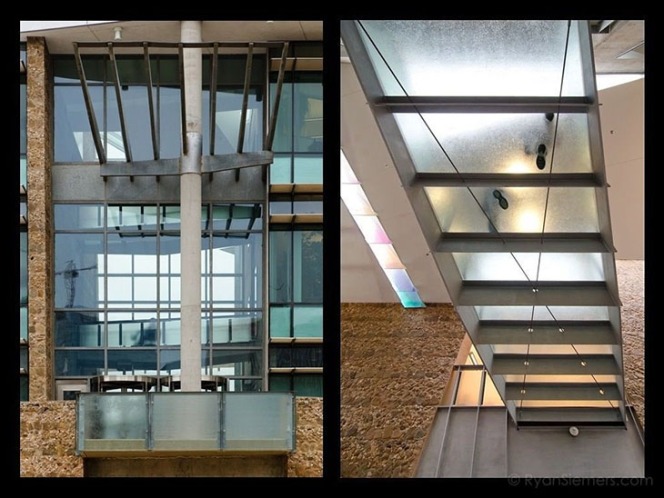
For firms looking into filmmaking/video:
1) Start small. A firm profile video (2-4 minutes) is a great addition to any website. It’s a great way to introduce your firm’s culture and personality to new clients and it’s easy to incorporate it in most company websites. A profile video can leverage existing assets (photos and development materials) with limited effort, and can usually be filmed within a day if planned well. It can be a great recruitment tool for very minimal effort. Most importantly, it will help you learn about the process, discover if you have good chemistry with the production company, and also internally get people thinking about whether video is right for future projects.
2) Work with someone who is willing to take leadership on the first project, but who doesn’t lead you blindly. They should help you define clear goals and manage the process. They should also be able to clearly outline a budget, develop key resources internal to your firm, help you maintain a budget, and point out potential pitfalls before they happen. They should also make sure everyone is on the same page before showing up with a camera.
3) Identify someone within the firm to be the point of contact for all productions. Usually someone within marketing. Seems like a no-brainer, but this alone can save much time in organizing information and dealing with production planning.
4) Begin thinking internally at your firm about how you can create more content internally that you can collect over time and develop into short project videos that express more about your process. These types of mini-documentaries can certainly feel more rough around the edges, but when shots get cut down to 3-5 sec clips, it can easily be edited to look great within the context of a larger story.
See more of Ryan's work on his website and Vimeo channel. And don't forget to follow him on Twitter.
We also recently interviewed Traci Lesneski, of Meyer, Scherer, and Rockcastle. You can read about the Maple Grove Library and see more of Ryan's work here.
Related articles
Also in NOVEDGE Blog

Enhance Your Designs with VisualARQ 3: Effortless Geometry Extensions for Walls and Columns
April 30, 2025 8 min read
Read More
MecSoft Unveils RhinoCAM 2025 and VisualCAD/CAM 2025 with Enhanced Features
March 08, 2025 5 min read
Read MoreSubscribe
Sign up to get the latest on sales, new releases and more …





